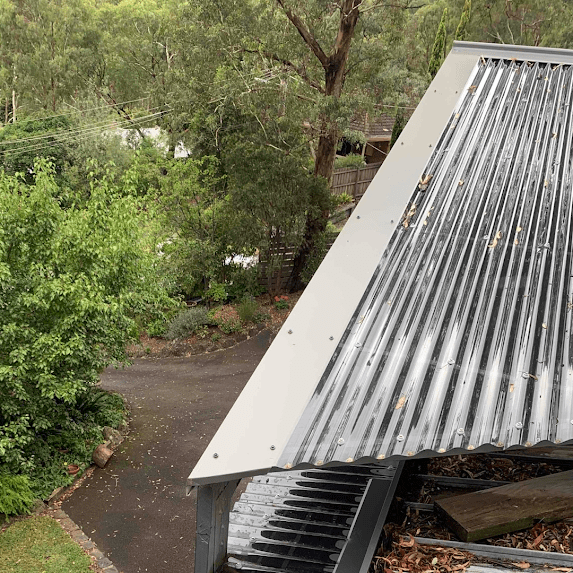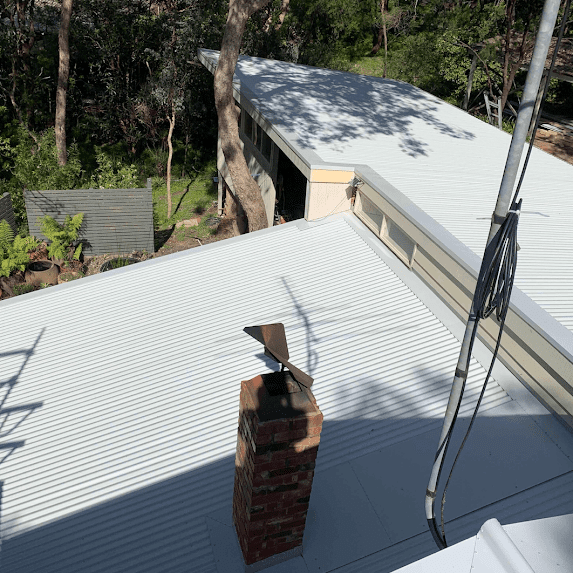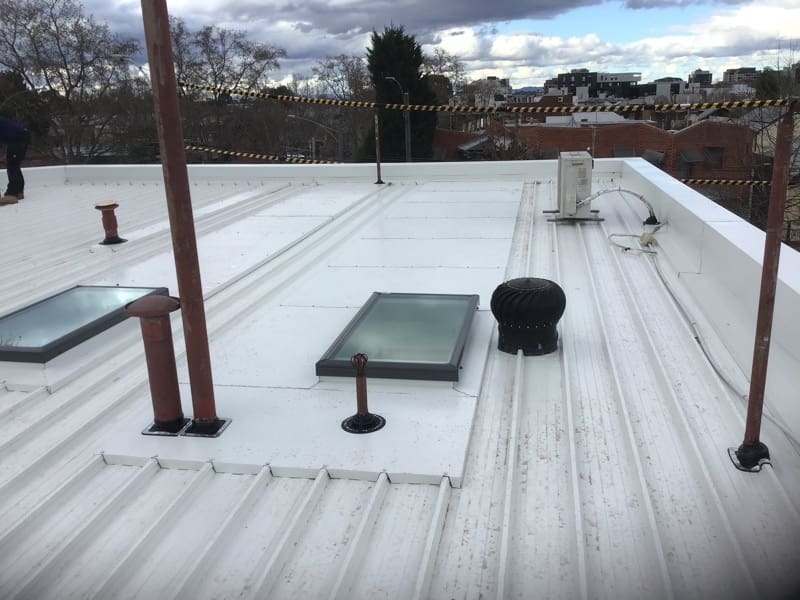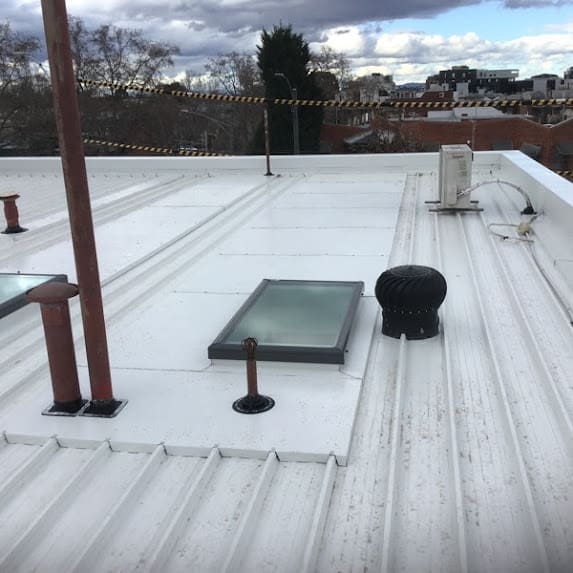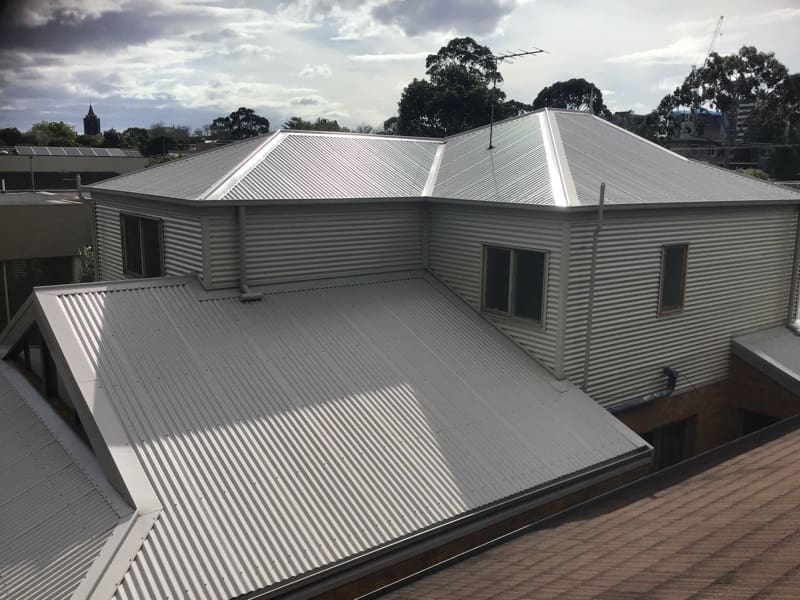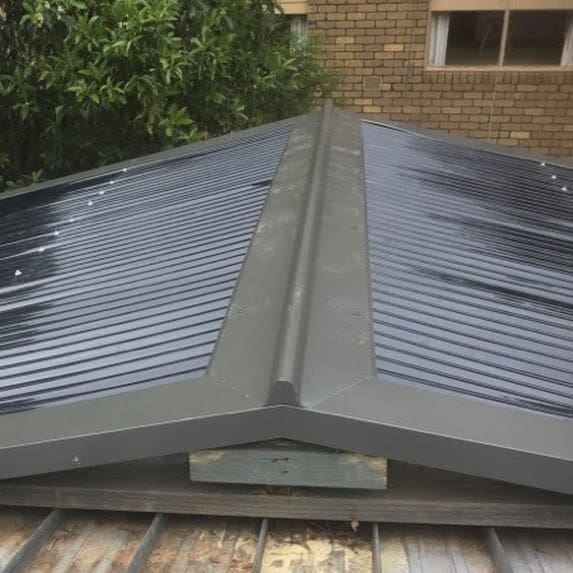
Polycarbonate roofing is known for its durability, but like many other materials, it’s still susceptible to the forces of nature. And in Melbourne–where highly unpredictable and severe weather is the norm–large, golf-sized hail falls every two to three years, causing unexpected damage. These massive hails can cause significant damage to polycarbonate sheeting, which may require your roof to be repaired or replaced.
In 2023, AAMI reported that hail, along with rain and flooding, was one of the leading causes of damage to homes across Victoria. While advancements in polycarbonate roofing have improved hail resistance and heat reduction, older or lower-quality sheets may still be at risk.
If your polycarbonate roof sheets have taken a hit from hail, you might be wondering: Does it need a full replacement, or can it be repaired? We’re here to answer all your questions on assessing and addressing hail-damage on polycarbonate roofing so you can confidently figure out the next steps for your home.
Did you know: Polycarbonate is 30 times stronger than acrylic?
What are the Benefits of Modern Polycarbonate Roofing?
Whether your home’s polycarbonate roof sheets were installed by a previous owner, or you added them later on, you might be curious about the advantages of modern options such as Laserlite. Designed and manufactured in Australia, Laserlite 2000 comes with a 10-year warranty to protect you against harsh weather. In addition it has:
Improved storm resilience
- Hail resistance: Laserlite 2000 is built to withstand hailstones up to 25mm in size during its 10-year warranty period. Its advanced Weatherguard technology also enhances durability, resisting 25% more impact from larger hailstones.
- Wind resistant: Engineered for high-wind areas, making it a strong choice for unpredictable weather conditions.
Heat reduction and aesthetic choices
For even greater heat reduction, Laserlite 3000 is the only polycarbonate sheeting with ComfortCool technology, designed to minimise glare and reduce heat absorption by up to 50%. Like Laserlite 2000, it also offers:
- Up to 50% more heat reduction compared to standard polycarbonate sheets
- 99.9% UV protection, ensuring stability in extreme climates
- High fire resistance, with self-extinguishing properties for added safety
- Heat-reducing colour shades: Laserlite sheets come in a range of transparent and translucent colours, each with specific heat and light transmission levels. In addition, Laserlite 3000 sheets provide up to 50% better heat reduction compared to Laserlite 2000.
Understanding Hail Damage on Polycarbonate Roofs
What causes hail damage?
While advancements in manufacturing have created a much more durable product, older polycarbonate sheeting may be more susceptible to hail damage, particularly under extreme temperature fluctuations.
The damage can vary depending on the severity of the storm and the size of the hailstone, however, common signs of hail damage to look out for include:
- Cracked or damaged panels
- Holes
- Deformed or warped panels
- Dented gutters or downpipes
- Water leaks and water stains inside your home
Why should you act quickly?
If you believe your roof sheets have been damaged by hail, it’s important that you act quickly. Hail can weaken your roof’s integrity and if left unrepaired, it can get worse with time. Potential risks of not replacing a hail-damaged polycarbonate roof immediately include:
- Hail cracks and holes can get larger, leading to further structural damage.
- Internal water leaks can cause further damage to walls, ceilings, carpet, and your belongings.
- Reduced lifespan of your roof as the roof sheets experience further degradation.
- Increased repair costs as damage gets worse over time.
- Water leaks and water stains inside your home
Should You Replace or Repair Polycarbonate Roofing?
So, should you repair or replace your polycarbonate sheets? If your roof only needs minor fixes like panel replacement or sealing cracks, you may just consider getting it repaired. However, if you have extensive cracking and outdated materials, a replacement may be necessary.
How to replace polycarbonate roofing
Thinking about replacing your polycarbonate roofing? Here’s a brief overview of the key steps involved in the process:
- Gather your tools and materials. You’ll need polycarbonate roofing panels, flashings, ladder, safety gear, and the appropriate tools for removal and installation.
- Measure the existing polycarbonate sheets.
- Remove the old polycarbonate sheets.
- Cut and fit new sheets.
- Secure and seal. Screw the panels in place, install the flashing, and seal the edges to prevent leaks.
Replacing polycarbonate roofing can be a complex and high-risk task. We strongly recommend consulting a roofing professional prior to starting any work yourself.
How can you prepare your roof for a hail storm so it’s protected for the future?
You’ve just had your roof replaced. Here’s how you can prepare it for a future hailstorm to help ensure its longevity:
Regularly check your roof. Ensure there’s no weak spots on the roof that may be susceptible to damage.
Maintain the surrounding area. Trim any overhanging branches, clean out the gutters and drainpipes, and secure any outdoor furniture or structures that could fly away in heavy winds.
Add additional protections for vulnerable areas. If you have skylights, consider installing shutters or protective covers to help prevent damage during hailstorms. Place hail blankets over solar panels if you’re anticipating a severe storm.
Upgrade your roofing material. If you haven’t recently upgraded your polycarbonate roofing, you may want to consider replacing it with more modern options–such as Laserlite–that offer a higher resistance to larger hailstones.
Is it time to replace your polycarbonate sheeting?
If you’ve been nodding your head while reading this article, you probably have extensive hail damage. What’s next? Consulting a roofing professional who can assess the state of your roof and let you know if it’s time for a replacement.
Contact us today on (03) 9499 8059 for a casual, no-obligation chat to find out how we can help with your polycarbonate roof replacement.
Frequently asked questions
How Long Do Polycarbonate Roofs Last?
Polycarbonate roofs are known for their durability and have an average lifespan of 10 to 25 years. However, with proper care and maintenance, their lifespan could extend beyond this.
How Much Do Polycarbonate Sheets Cost?
The cost of polycarbonate sheets depends on a number of things, including the:
- Brand you choose. Prices can vary from manufacturer to manufacturer, so it’s best to check their websites for up-to-date pricing.
- Colour. Certain colours may be in higher demand than others, causing the price to be higher or lower for the same sized-sheet.
- Opacity. Whether you want clear, opaque, or translucent, the opacity you want your polycarbonate sheets to be will also impact the price
- Size. The larger the sheet size, the higher the price will likely be.
What is the Best Polycarbonate Roofing?
In this article, we’ve shared the benefits of Laserlite, a high quality polycarbonate roofing option known for its durability and heat reduction.
“I used Laserlite Opal polycarbonate. I chose it because it lets through the most light but without the heat. Worked really well for me and 10 years on [it’s] still in great condition,” wrote one user on Reddit.
Another popular choice is SUNTUF, manufactured by Palram. Like Laserlite, SUNTUF offers a premium range of polycarbonate sheets designed for enhanced performance and weather resistance.
The key difference? Laserlite is Australian-made, whereas Palram is not. So, if supporting an Aussie manufacturer is important to you, go with Laserlite.
Date
Feb 20, 2021
Read Time
6 minutes
Services
Roof Replacement
